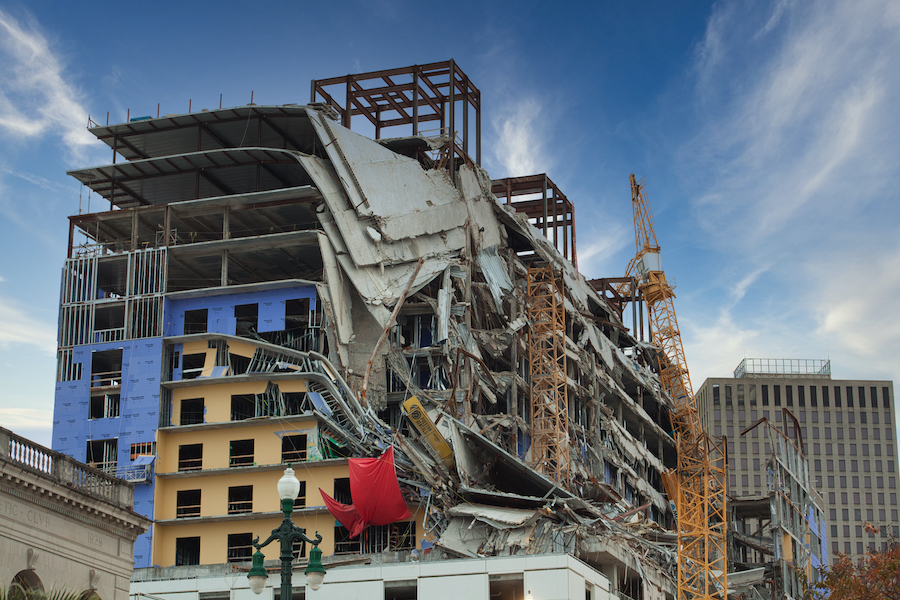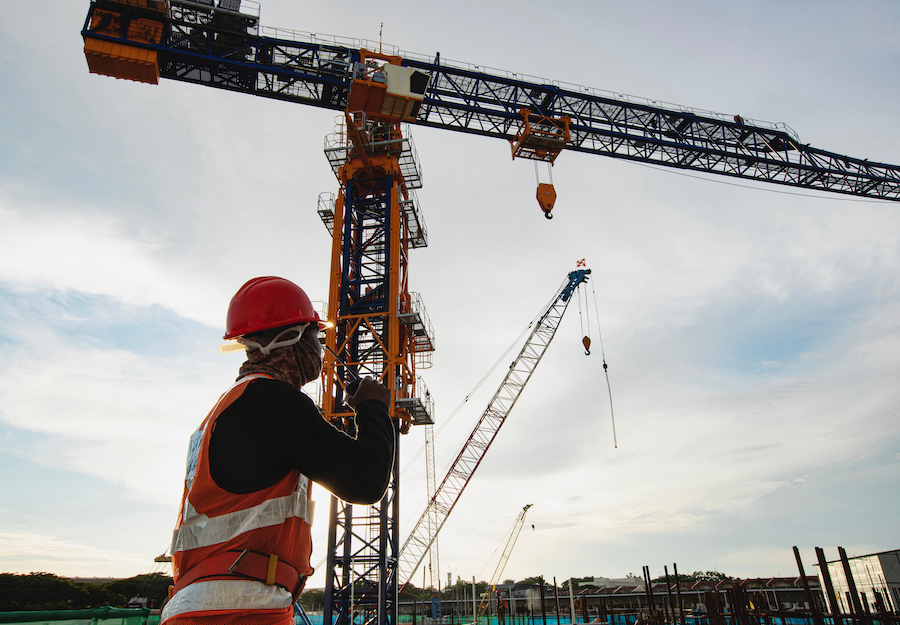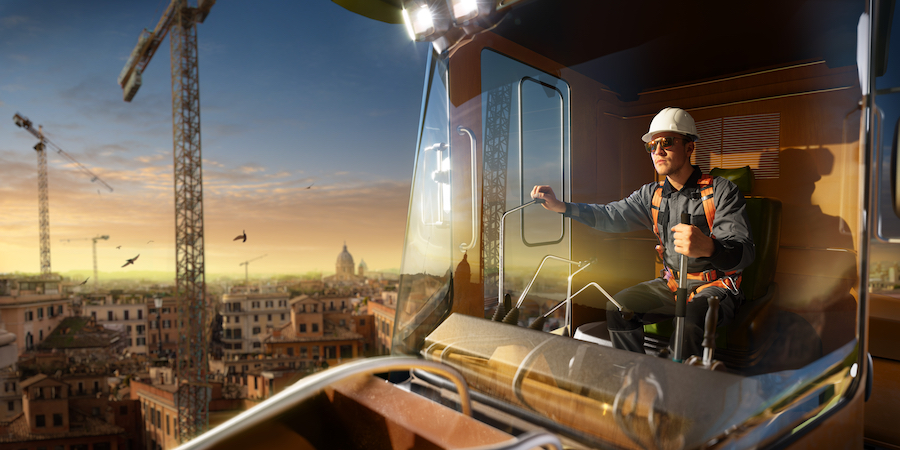
View the complete article here.
The construction industry is a highly-specialized field filled with some of the most skilled, trained, and regulated workers in the world. As they literally build and repair every part of our infrastructure around the globe, sometimes in the most hazardous conditions people can experience, there are bound to be accidents. Some of them are avoidable while others are not, but not matter what the cause, every member of the team has to be ready to act if necessary.
Tower Cranes are a Specialized Industry
While there are countless construction aspects that require technical skill, training, and plain old-fashioned bravery, one of the top five has got to be tower crane operator. These behemoths reach 265 feet tall, have a maximum jib reach of around 230 feet, and can lift nearly twenty tons. That also means that they can drop almost twenty tons a total of about 265 feet, causing an arc of damage almost an entire city block in any direction.
Despite the skill level and experience of the operator, emergencies can occur and the crew on the ground has to be able to take proper steps.
Crane Accidents on the Rise
In July 2021, five workers were killed when a tower crane collapsed in Kelowna, British Columbia. In September 2022, three workers were killed and six others hospitalized after a Hong Kong tower crane collapse. These and other incidents are just rare enough to make headlines, but unfortunately, not uncommon enough to keep from being a serious workplace hazard.
While all types of crane accidents as a whole have remained mostly steady from year to year ever since OSHA began gathering data, tower crane accidents are an entirely different category. The numbers surrounding this specific type of crane have been rising slightly in recent years, and experts are working hard to figure out why. But regardless of the causes, this fact only highlights the need for better awareness and preparedness in how to deal with any kind of tower crane emergency that may arise.

What Makes Tower Crane Rescues Necessary
Overwhelmingly, some of the most common causes of fatalities in any construction or loading crane emergency involve being struck by the payload, having the payload come loose and cause injury, and falls from the crane itself. Better regulations concerning safety gear like harness systems are already helping to reduce that threat, but there are still many other kinds of emergencies that surround this kind of operation.
Unlike more commonly used mobile track system cranes, tower cranes are built onto a sturdy base to support not only the weight of the crane, but also the weight of the payload. Too often, this base can suffer from wear and tear that goes unnoticed that weakens the structural integrity of the entire system, or worse, it was not assembled according to regulation in the first place. Both of these issues can lead to hazards.
Another common fault—weather conditions—is something that operators do train and prepare for but can still catch them off guard. High wind conditions and extreme, sudden gusts of wind can both spell trouble for tower cranes. Lightning striking the crane or the jib can also lead to emergencies with the payload of electrical failure. Even something like rain, mist, fog, or low-level clouds can impact visibility and lead to problems.
Electrical malfunction and other crane mishaps with the mechanism itself have led to incidents in the past, both of which can make a rescue very dangerous. Sending even more people up into an already unstable, hazardous control cab—especially one at that height—carries its own greater risks.
Finally, a significant number of rescues involved an operator who was having some kind of medical emergency. Not only does this mean a crew member is in need of assistance, but the person who is at the helm of 500,000 pounds of crane and payload is incapacitated and no longer in control of it. They may be in no condition to safely extract themselves from the cabin and descend the ladder system, too; that means a rescuer will need to be able to render aid while navigating a cramped space 25 stories above the ground, then assist the operator in making it safely down.
These are not the kind of things that your crew can deal with unless they have a plan in place and have practiced it routinely.
Hazards That Make the Tower Crane Ladder System a “No-Go”
One of the first issues in any tower crane rescue is the fact that the ladder system may be out of commission. It could be due to damage to the crane itself, a sudden onslaught of dangerous weather like wind and lightning, or because an unconscious operator cannot participate in their own extraction. In any event, the rescue could require strategic planning that includes working around the presence of the ladder instead of relying on it.
While all tower cranes are equipped with a ladder, a smaller percentage are also outfitted with some kind of lift system. This can actually be a detriment in a rescue though, especially one involving electrical failure or dangerous weather patterns. The ladder is almost always going to be the avenue that rescuers must rely on, but with climbing time—typically fifteen minutes to reach the cab’s height, and that’s for experienced climbers—there isn’t time to waste on hesitation or failure to implement a rescue plan.

A Helicopter May Not be the Answer for a Tower Crane Rescue
Some tower crane rescues have actually required the use of a helicopter team to lower someone to the crane’s cab, but there are a lot of inherent problems with that. Apart from things like bad weather (if that’s what caused the emergency in the first place) and the sway of the jib under the downdraft from the helicopter’s rotors, the sheer time it takes to get a helicopter crew off the ground and sent to the crane’s location can mean precious minutes or even hours are wasted.
For any possible tower crane emergency, your crew must be prepared for someone to stage the rescue from the ground and use the ladder—assuming it’s still accessible.
Again, helicopter rescues are possible, but they’re not always going to be the most feasible option. Take a look at this video for more information.
What is a Tower Crane Rescue Plan?
This sounds like an obvious question, but it’s really not. A rescue plan isn’t just some steps you intend to follow in the event of an emergency because (this comes as no surprise) emergencies are rarely going to follow any kind of prepared pattern. Your plan needs to not only be based on a wide variety of conditions and contingencies, it needs to be put in writing, distributed to your crew, posted in accessible places, and practiced regularly to ensure everyone knows what to do.
Ideally, leaving this type of rescue to the professionals such as firefighters and other first responders would be a great course of action. After all, this is literally what they do. Unfortunately, experts have warned that your crew can’t wait around for first responders in every instance. They must be trained and prepared to conduct a fall-from-height rescue or other type of tower crane rescue. The time it takes for first responders to reach the scene—often over difficult construction terrain and inaccessible locations like the cab of the crane—can mean lives are lost.
Fortunately, there are both legal outlets and industry experts who provide guidance on how to craft your rescue plan. There are even training programs and certifications (like this one, just as an example) in tower crane rescue that your team can undergo. Some of these are even a single-day course that can prepare your entire team to step in and act as needed.

Basics of the Tower Crane Rescue
A basic tower crane rescue contains a number of significant steps, many of which start before an emergency ever occurs.
- Create an emergency response plan that meets your specific equipment, and follow it exactly.
- Ensure that all team members have a solid understanding of how to assess a potentially dangerous situation and (most important) know to call 911 regardless of the possibility that they can just “handle” it.
- Make sure that there is a fully-stocked rescue kit on site and ready to use at all times. Be certain that every single crew member knows the exact location of the rescue kit and is able to bring it when called for.
- Get a trained crew member up to the victim as quickly as possible to assess the emergency and help first responders know the best route to and from the cab with the victim.
- Stabilize the victim if it’s safe enough to do so, or move the victim immediately if the situation is hazardous.
- If unable to wait for trained first responders to reach the victim, your crew member must use the rescue kit to “package” the victim for transport, transfer that person’s weight to the lowering system, and evacuate them from the tower.
Practice Makes Perfect… And it Saves Lives
There’s one more major component to a tower rescue, and that’s ensuring that your crew practices these rescues in real-time and does them frequently. You cannot wait until the worst happens to discover that the only person who’s trained to execute this kind of rescue is the person who just got injured. By putting the steps into action, not only will everyone be familiar with them, but should an emergency occur, your entire crew will be exponentially safer conducting a rescue at height since they’ve done it routinely.
A great option is actually to partner with a nearby first responder team and offer your crane for a day of training. Some crews have actually hosted several different agencies at the same time for this, which gets their entire crew trained as well as ensures that first responders throughout the surrounding area have had real-world experience conducting this kind of rescue. Your effort to keep your team safe could mean saving the lives of countless other contractors and their teams, too.
View the complete article here.
What are the key steps in a tower crane rescue?
Executing a tower crane rescue involves pre-planning and having an emergency rescue procedure in place. This includes training staff, conducting practice drills, having the necessary equipment available, and ensuring communication channels are efficient. During the rescue, you need to secure the victim to prevent further injury, lower them to the ground safely, and provide necessary medical assistance.
What is important to consider during a tower crane rescue?
During a tower crane rescue, it's crucial to consider the safety of both the victim and the rescuer. Avoiding panic, ensuring stable communication, and having a clear understanding of the rescue procedure can help maintain control of the situation. Additionally, time is of the essence in such scenarios, so swift, coordinated action is vital.













































